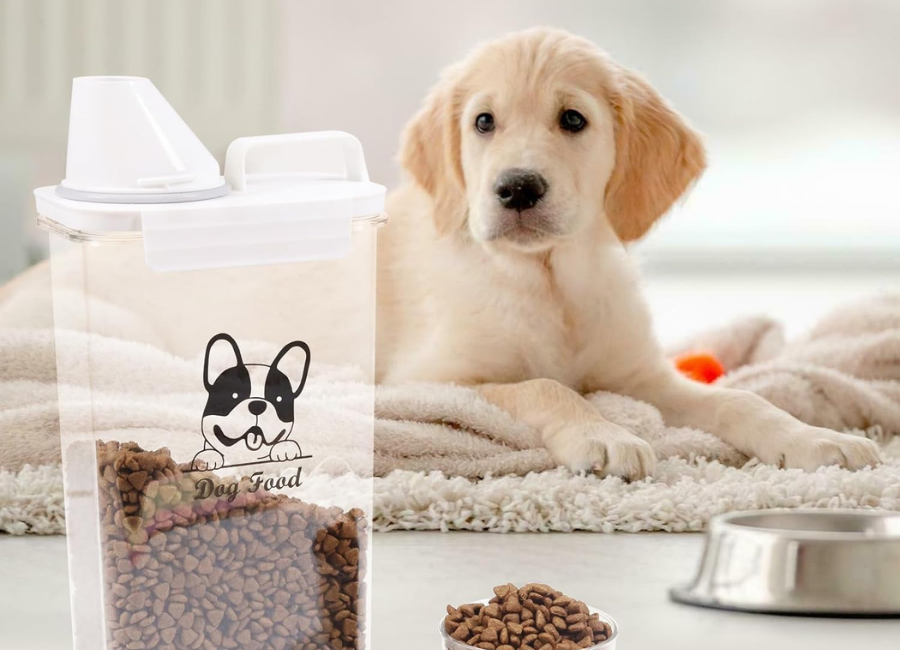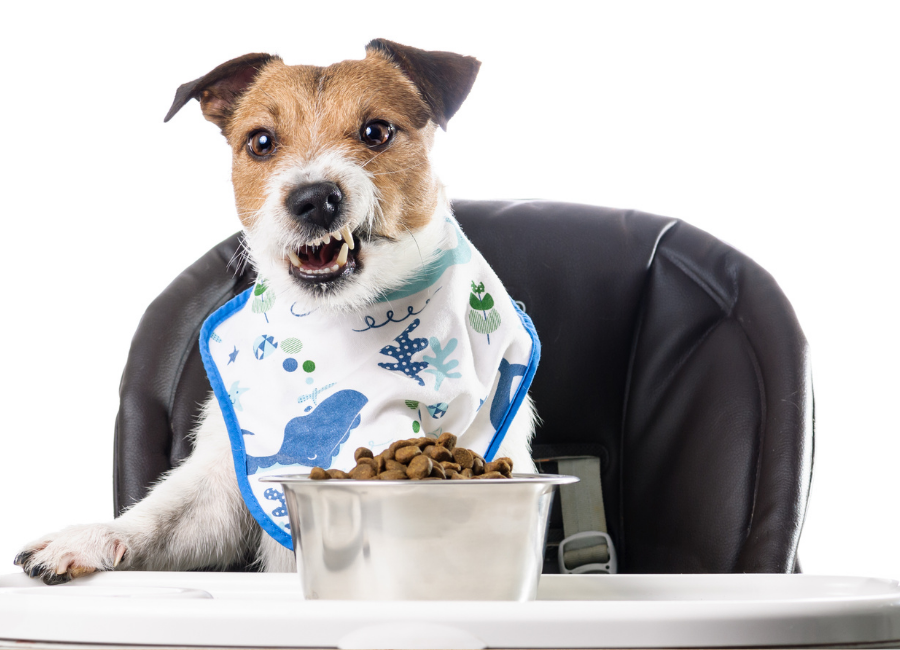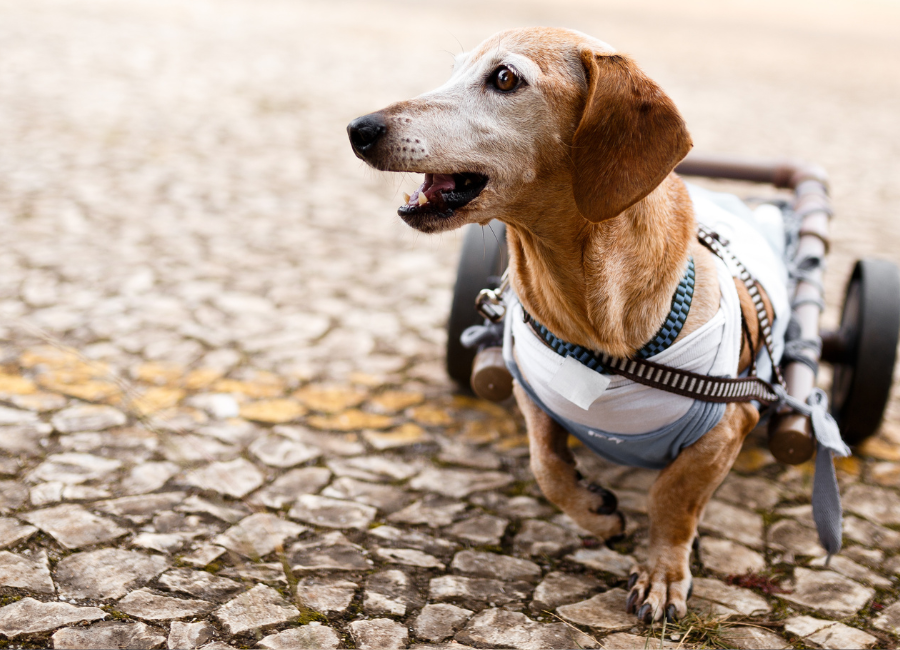How Much Dry Food Should I Feed My Dog?

You likely know that keeping your dog healthy, happy, and active requires a diet of high-quality food. But do you know how much dry dog food you should be feeding your dog? When it comes to providing your dog the right amount of food, overfeeding or under-feeding can lead to lifelong health issues.
So, if you’re unsure of what a healthy portion of kibble is for your best friend, we’re here to help! This article will clarify the factors that go into determining how much to feed your dog.
Does My Dog’s Portion Size Really Matter?
Long story short: absolutely. Providing your dog the right amount of calories can prevent a multitude of health issues.
When You Don’t Feed Your Dog Enough
Restricting your dog’s calories can cause malnutrition or a nutritional deficiency [1]. A lack of overall calories or a specific nutritional need can lead to an unhealthy coat, lethargy and lack of energy, organ failure, and even death.
When You Feed Your Dog Too Much
It can be difficult not to express affection for your dog with treats and a bit of extra kibble. However, overfeeding your dog can be disastrous for your dog’s wellbeing.
Once your dog becomes overweight or obese, they are at higher risk for:
- Joint issues, including ligament tears and osteoarthritis
- Spinal issues, including slipped disks
- Heart failure
- Trouble breathing
- Dermatological problems
- Cancer
- Depression caused by reducing the quality of life and the inability to partake in the activities your dog once loved [2].
How Can You Tell If Your Dog Is Eating Too Much or Too Little?

The easiest way to determine if you’re feeding your dog enough is to assess your dog’s body condition score. You should be able to feel your dog’s ribs when you rub over their chest. Your dog’s tummy should also nip inward in front of their hips and behind their rib cage. However, your dog is too thin if their ribs, hip bones, and spine are highly visible.
How Much Dry Food Should I Feed My Dog Per Day?
Determining the right amount of food to feed your dog each day is more complicated than many dog owners realise. You have to take into consideration many different elements, including, your dog’s:
- Age
- Weight
- Metabolic rate
- Type of dry food
- Activity level
- Meals per day
We recommend weighing your dog to determine an accurate feeding amount, whether you feed homemade dry food or prepared meals. Then you will want to read the feeding guide on your dog’s food packaging (or you can calculate your dog’s daily food need using our calculator).
How to Read Your Dry Food Feeding Guide
Your dog’s food will list its ingredients along with a feeding guide on the back of the packaging. This will give you a recommendation of how much dry food to feed your dog based on calorie density, protein levels, and other factors.
Calorie density is often the biggest factor in how much to feed your dog. In the dog food world, this is shown through kilocalories (kcal) per cup and kcal per kilogram [3]. This is often displayed as the Metabolisable Energy (ME) on the package--which looks like this:
ME (kcal/kg) = XX
This is how much energy your dog can take from one kilogram of food. Food that’s more calorie-dense will have more calories per cup and by weight, therefore, your dog’s portion size will be smaller. (Tip: Premium dog foods are usually more nutrient-dense).
How-to Accurately Adjust a Recommended Portion for Your Dog’s Needs
Usually, a feeding guide provides dog owners with an approximate portion or a portion range. For example, it may suggest that a dog that weighs between 3 and 6 pounds eat ½ cup of their food per day. However, if your dog weighs 3 pounds and is pretty inactive, this may be too many calories. For a highly active 6-pound dog, ½ cup may not be enough.
These amounts are the recommendation for a 24-hour period, which means if your dog’s food manufacturer recommends that you feed your dog 1 cup of food daily, but they eat 2 meals, you will want to divide the number in half. You can use this equation:
Amount of food recommend for 24 hours ÷ meals per day = portion per meal
Factors to Take into Account When Portioning Your Dog’s Food
When it comes to your dog’s daily caloric intake, it’s not one-size-fits-all. You will want to slightly adjust your dog’s daily caloric intake accordingly.
- Age: Young dogs have higher metabolisms, therefore they need more calories than older dogs
- Activity level: Highly active dogs burn more calories
- Current Body Condition: Dogs that need to gain weight need more calories. Dogs that need to lose weight need fewer calories.
Reassess Your Pooch’s Portion from Time-to-Time
Your dog’s meal portions will need reassessment every month or so based on their weight, body condition score, and activity level.
If your dog begins to partake in more high-energy activities, you will want to increase their caloric intake. Dogs that are losing weight or gaining weight will need a new portion calculation to fit their weight needs.
When In Doubt, Ask Your Vet
Your vet is the best resource when it comes to understanding your dog’s nutritional needs. They can recommend how to adjust your dog’s portion size based on their health. Your veterinarian can also talk to you about healthy ways to help your pet lose weight.
How Much Dry Food Should You Feed Your Dog?

Understanding your dog food’s calorie density is the first step to determining an accurate portion size. From there, read the packaging recommendation and increase or decrease the amount based on your dog’s age, activity level, and body condition. Your vet can assist you in determining an exact amount to feed your dog.
Looking for a premium dry dog food that is tailored to your dog’s weight, size, activity level, and more? Petzyo's Kibble That Counts uses a portion calculator to determine your dog’s meal portions.
References
[3] Nutrition




